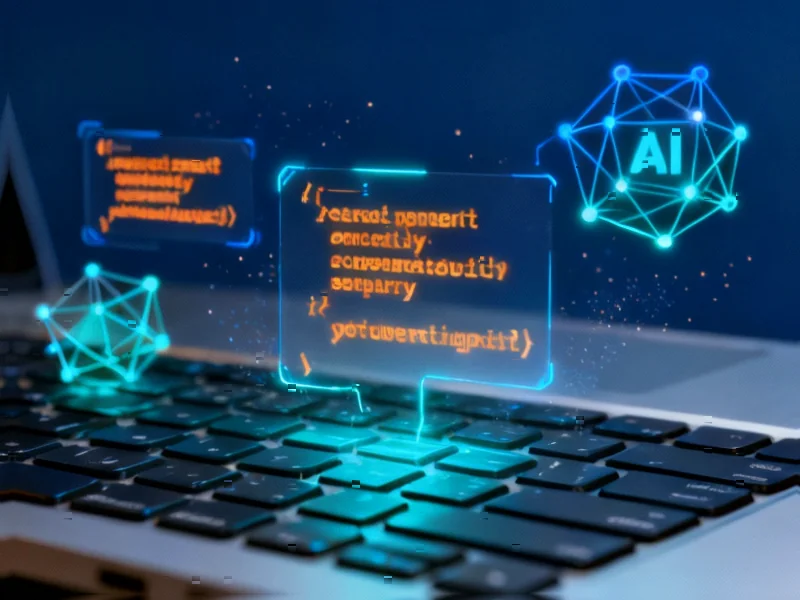Market Expansion and Key Drivers
The generative AI coding assistant market is poised for remarkable expansion, projected to surge from $18.34 million in 2023 to $139.55 million by 2032, representing a compound annual growth rate (CAGR) of 25.4% during the forecast period. This substantial growth trajectory underscores the transformative impact these tools are having on software development practices worldwide.
Table of Contents
What makes this growth particularly significant is how these AI-powered solutions are fundamentally changing developer workflows. By providing real-time code suggestions, automated debugging, intelligent refactoring, and sophisticated error detection, these tools are delivering measurable improvements in development efficiency. The underlying technologies driving this revolution include advanced machine learning algorithms, natural language processing (NLP) capabilities, and robust cloud computing infrastructure.
Functional Segmentation: Code Generation Leads the Way
Within the functional segmentation, the “Code Generation & Autocompletion” segment dominated with 44% revenue share in 2023. This leadership position reflects developers’ growing reliance on real-time coding assistance to accelerate development cycles while minimizing syntax errors and improving overall code quality.
Leading platforms like GitHub’s Copilot, Tabnine, and AWS CodeWhisperer have set new standards for intelligent code completion, using sophisticated machine learning models to predict and generate contextually appropriate code snippets. The emergence of chat-based coding assistance services, including Microsoft’s GitHub Copilot X and Google’s Codey, represents the next evolution in developer-AI interaction, bringing conversational interfaces to coding workflows., according to related news
Application Analysis: Diverse User Base Adoption
The adoption patterns across different user segments reveal interesting market dynamics. Individual developers and freelancers constituted the largest segment at 36% in 2023, leveraging AI assistants to manage multiple projects efficiently while maintaining high coding standards. The appeal of subscription-based, cost-effective AI tools has been particularly strong in startup environments and open-source development communities.
Meanwhile, small and medium-sized enterprises (SMEs) are expected to exhibit the highest growth rate at 26.4% CAGR during the forecast period. For organizations with limited development resources, AI coding assistants provide crucial advantages in automating repetitive tasks, enhancing team collaboration, and improving software security posture. The scalability of cloud-based solutions further enables SMEs to access enterprise-grade development tools without significant infrastructure investment., as related article
Deployment Preferences: Balancing Control and Flexibility
The deployment method analysis reveals distinct preferences across different organizational types. On-premise solutions captured the largest revenue share in 2023, particularly favored by organizations in highly regulated sectors such as finance, healthcare, and government. These industries prioritize data privacy, regulatory compliance, and maintaining control over AI-generated code outputs.
Enterprise-focused solutions like IBM’s Watson Code Assistant and JetBrains’ AI-integrated IDE have successfully addressed these concerns with robust on-premise offerings. However, cloud-based deployments are projected to experience the highest growth rate, driven by their inherent advantages in scalability, remote accessibility, and seamless integration with cloud development environments. The rise of distributed development teams and cloud-native application development continues to fuel this trend.
Regional Market Dynamics
North America maintained market leadership in 2023, bolstered by the concentration of major technology companies, advanced AI research institutions, and early adoption of AI-driven development tools. The presence of industry pioneers like GitHub Copilot, Google Codey, AWS CodeWhisperer, and IBM Watson Code Assistant has created a vibrant ecosystem for innovation and adoption.
The Asia-Pacific region emerges as the growth frontier, expected to achieve the highest CAGR during the forecast period. This accelerated growth is fueled by expanding IT sectors, growing developer populations, and substantial investments in AI research and cloud infrastructure across both emerging and developed markets. Countries including China, India, Japan, and South Korea are witnessing rapid digital transformation, with local tech giants like Alibaba, Baidu, and Tencent actively developing AI coding solutions while global players expand their regional presence.
Competitive Landscape and Strategic Directions
The competitive environment features a diverse mix of technology giants and specialized solution providers. Major cloud providers including Amazon Web Services, Microsoft, and Google are leveraging their cloud infrastructure and AI capabilities to offer integrated development solutions. Meanwhile, enterprise-focused vendors like IBM emphasize security and compliance with on-premise and hybrid deployment options.
Specialized players including Tabnine, CodiumAI, JetBrains, Sourcegraph, and Replit are carving out distinct market positions by focusing on specific developer segments, offering unique feature sets, and implementing flexible pricing strategies. The competitive differentiation increasingly hinges on several key factors:
- Feature innovation and development workflow integration
- Cloud platform compatibility and deployment flexibility
- Security protocols and compliance certifications
- Pricing models accommodating different user segments
- Multi-language support and platform compatibility
Looking ahead, the evolution of generative AI coding assistants will likely focus on enhanced contextual understanding, improved code quality assessment, and deeper integration with development lifecycle management. As these tools become more sophisticated, they’re positioned to become indispensable companions in the software development process, potentially reshaping how developers approach problem-solving and code creation across industries.
For those seeking more detailed market analysis, a comprehensive sample report provides additional insights, while the complete market analysis offers deeper examination of trends and projections. Related technology markets including computational fluid dynamics and digital thread solutions are also experiencing parallel transformations driven by advanced computing capabilities.
Related Articles You May Find Interesting
- Elon Musk’s AI Ambitions Fuel Demand for Unprecedented Voting Control in Tesla P
- Tesla’s Bold Bet: Musk’s AI Vision and Compensation Battle Take Center Stage in
- Oracle Cloud’s New E6 Instances with AMD EPYC Turin Outperform Rivals in Benchma
- Apple’s Privacy Purge: How Viral Dating Apps Failed User Protection Standards
- Elon Musk’s Trillion-Dollar Ambition Faces Resistance Over Robot Army Control
References
- https://www.snsinsider.com/sample-request/6493
- https://www.snsinsider.com/reports/generative-ai-coding-assistants-market-6493
- https://www.snsinsider.com/reports/computational-fluid-dynamics-market-8547
- https://www.snsinsider.com/reports/digital-thread-market-8398
This article aggregates information from publicly available sources. All trademarks and copyrights belong to their respective owners.
Note: Featured image is for illustrative purposes only and does not represent any specific product, service, or entity mentioned in this article.



